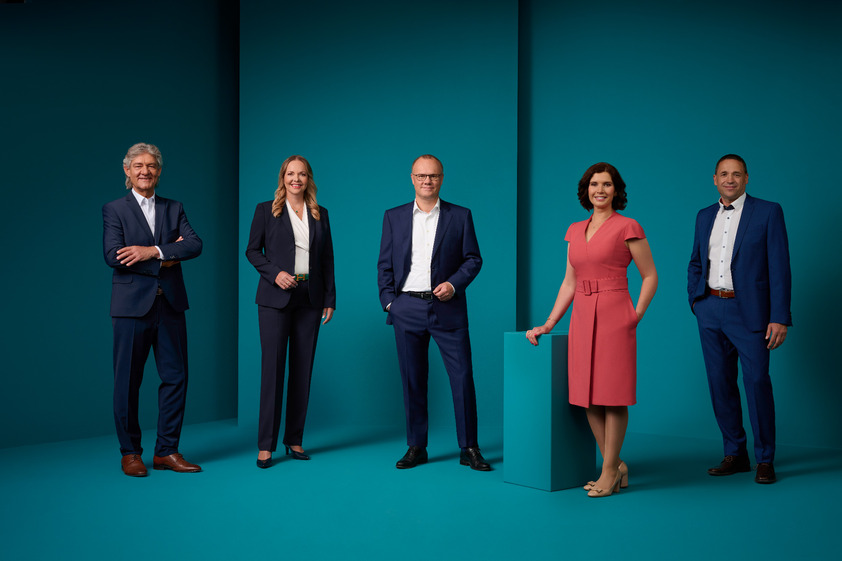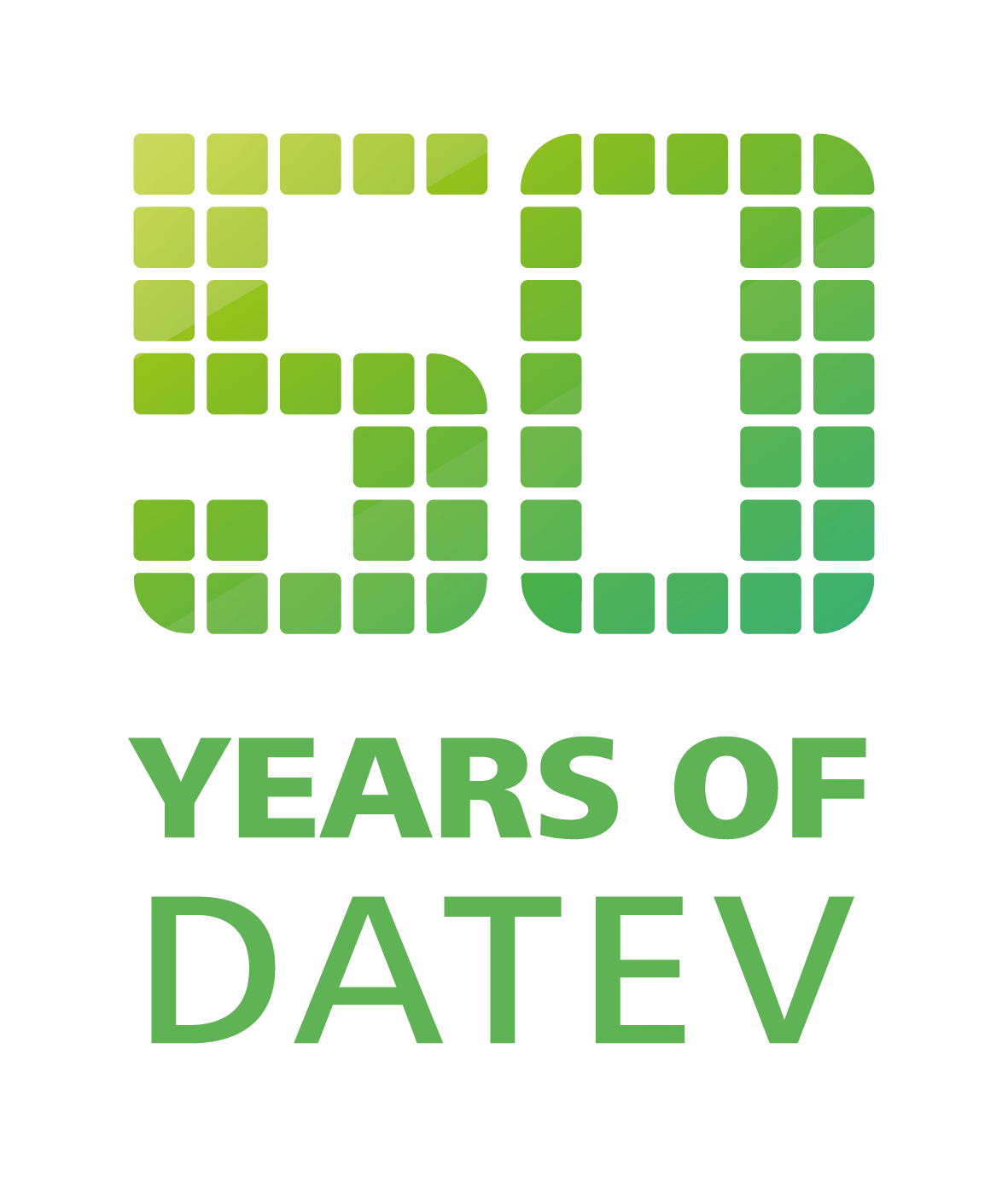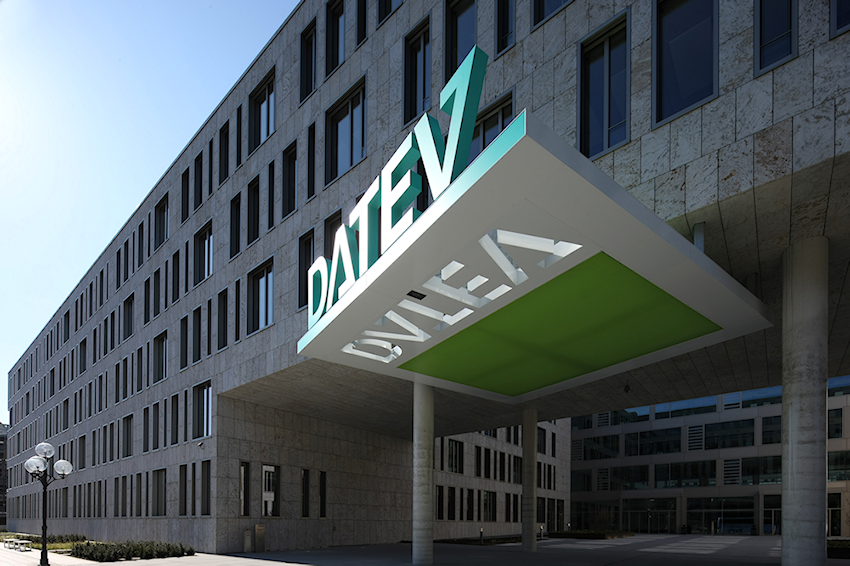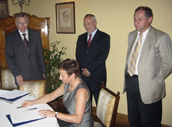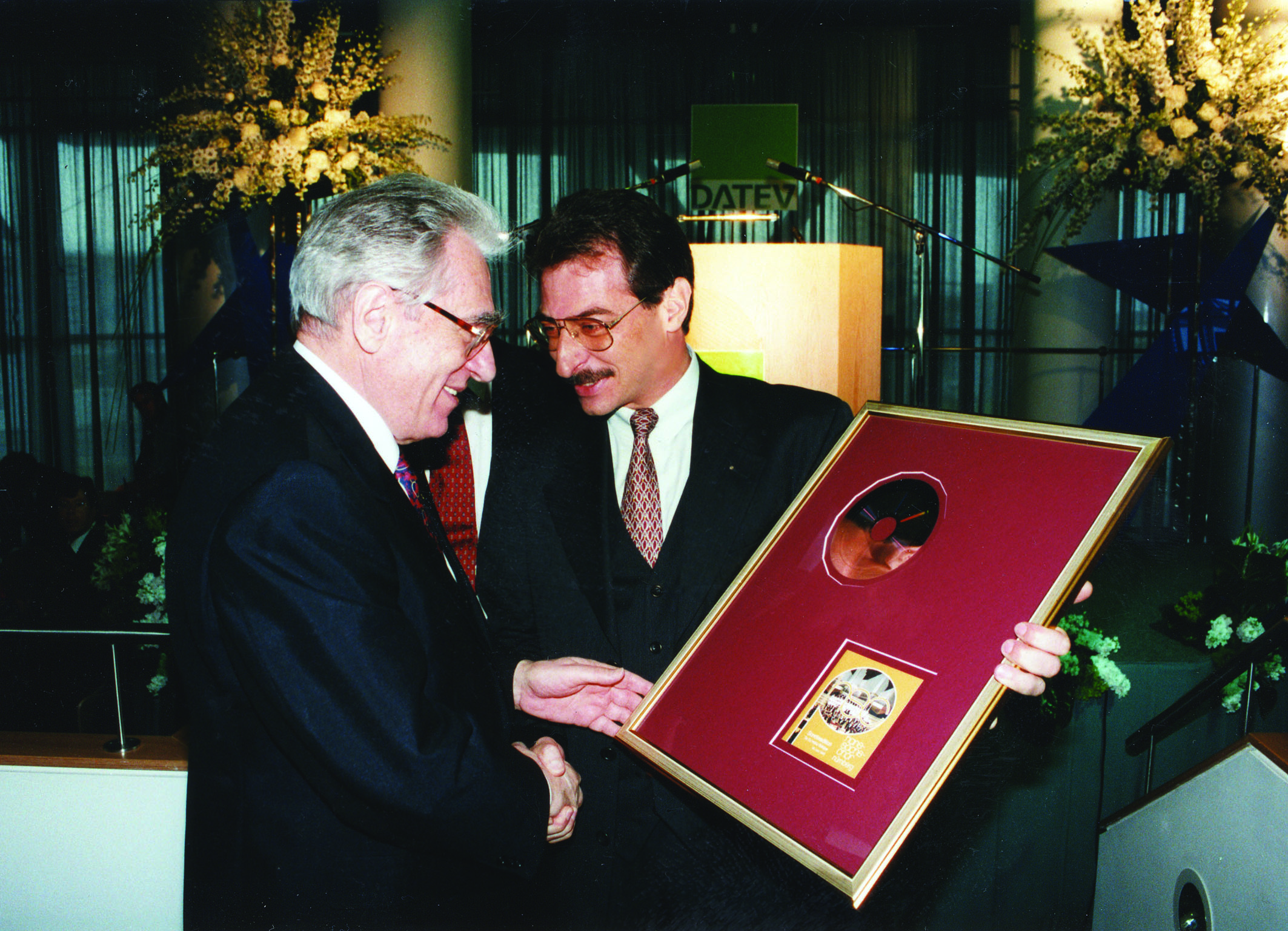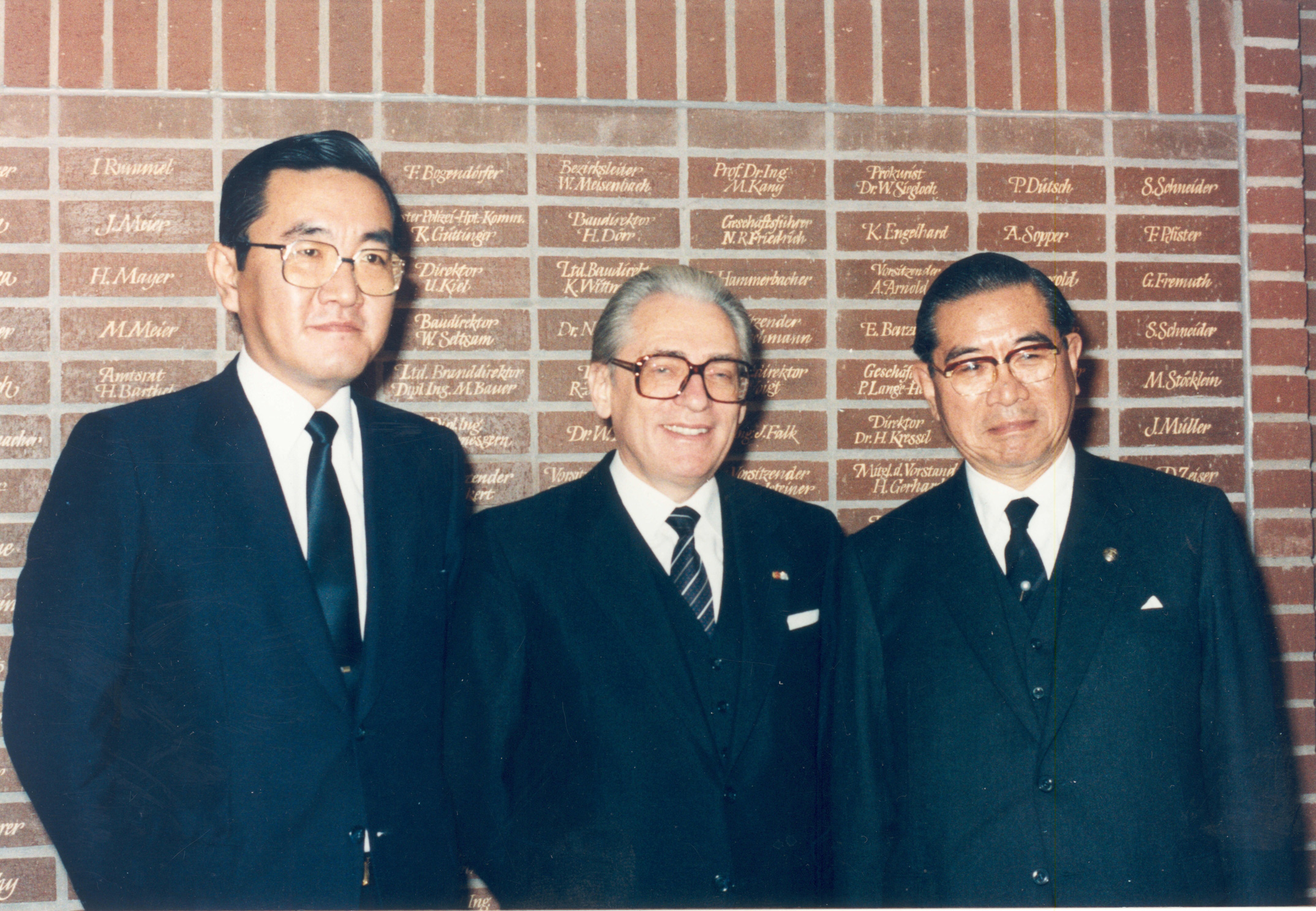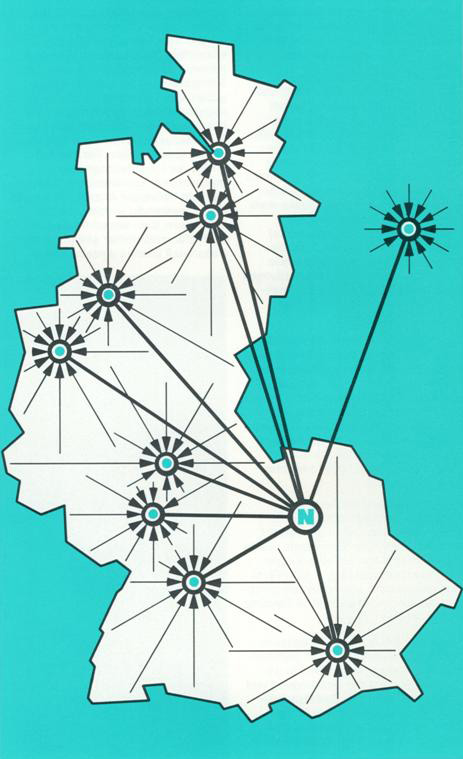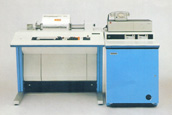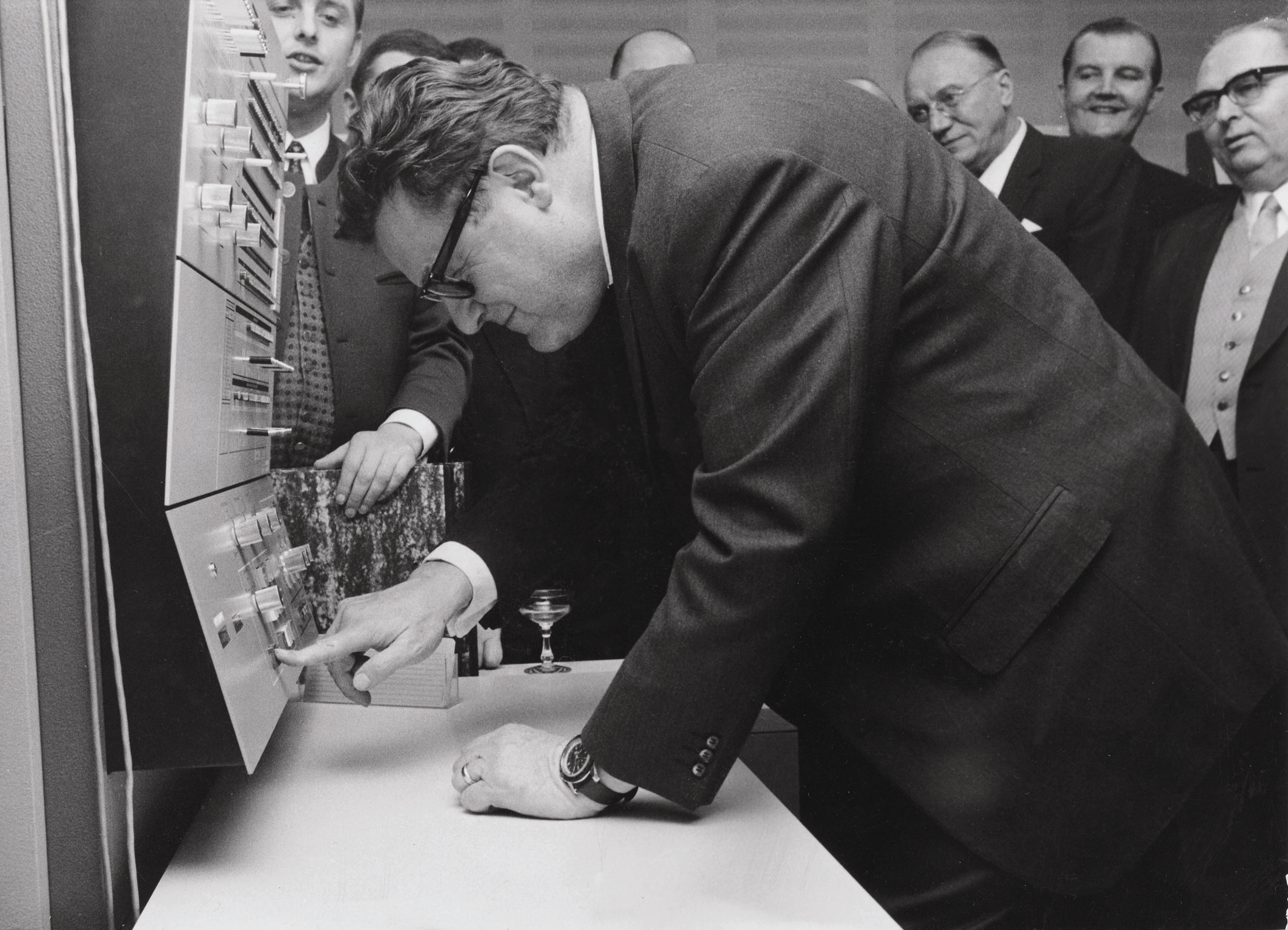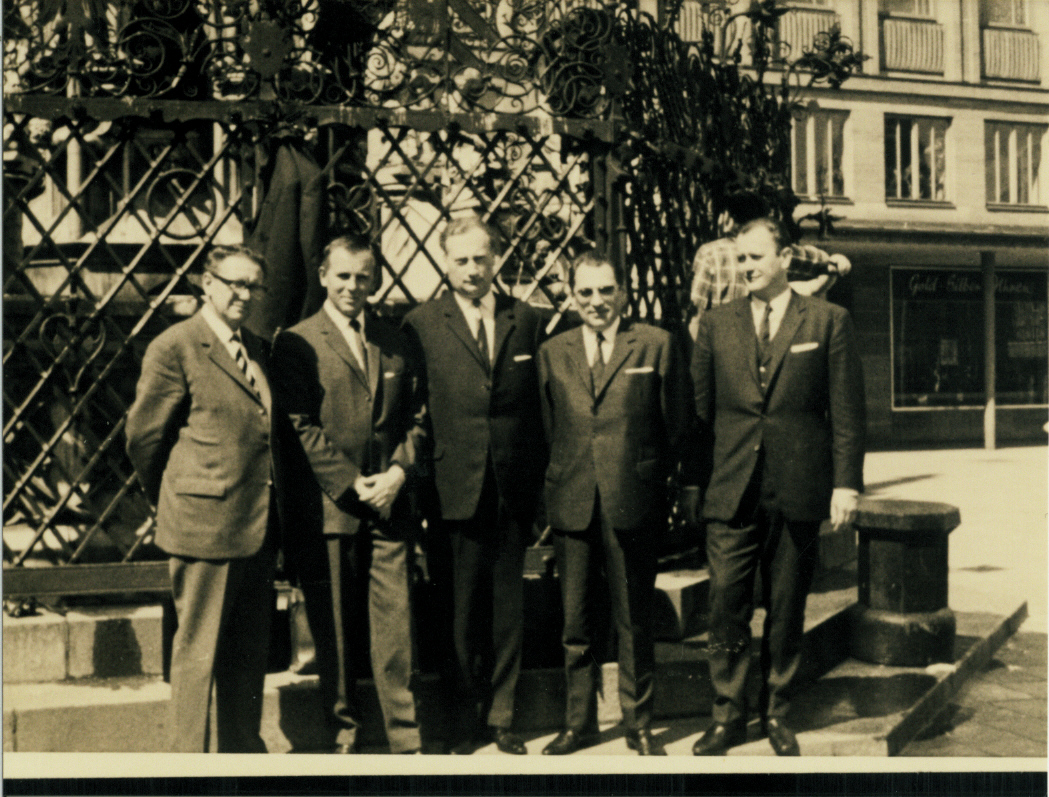- title
#label.get("datev.flapSelector.solutionsFor")
#label.get("datev.flapSelector.choose")
Looking back at more than 50 years of our corporate past
DATEV's history
On this page, we would like to lead you through our cooperative's successful history of almost six decades.
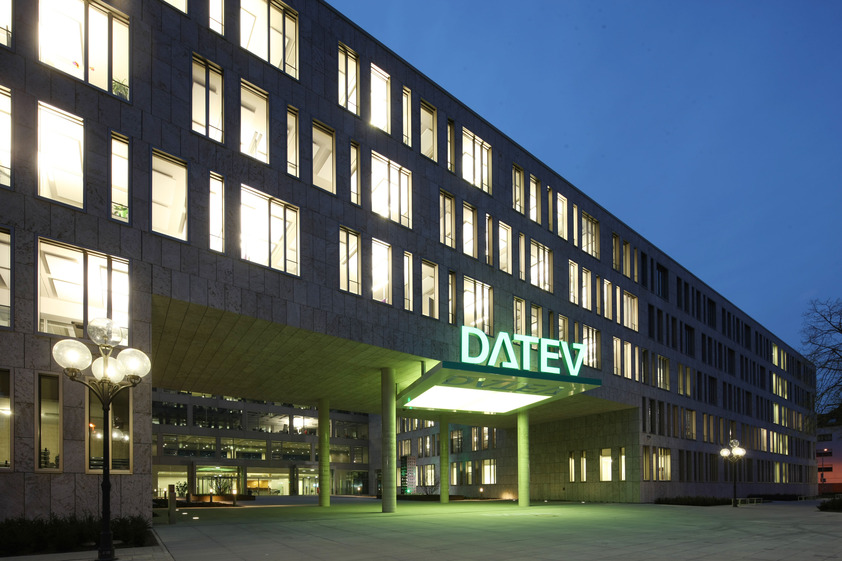
December 2020: DATEV becomes day 1 member of GAIA-X AISBL
DATEV eG is actively participating in the GAIA-X project and will become a day 1 member of the GAIA-X AISBL association. In the founding phase, it will consolidate and facilitate the initiative’s activities. It considers both GAIA-X’s objectives and the joint European participation and cooperation with many renowned partners as important elements for Europe’s digital future.
April 2019: Project Fit for Future and a restructured executive board
This restructuring project focuses on a new form of collaboration. Products will be developed in workstreams. The idea is to involve DATEV's customers more closely and benefit from the implementation speed.
The executive board was restructured with this project: Chief Executive Officer Dr. Robert Mayr (CEO) focuses on management control and DATEV's global strategy. As Chief Financial Officer (CFO), Diana Windmeißer is responsible for DATEV's overall economic efficiency. Chief Technology Officer (CTO) Prof. Dr.Peter Krug is in charge of all areas of development and operations as well as printing and shipping. Chief Markets Officer (CMO) Eckhard Schwarzer is responsible of DATEV's service and sales strategy. Julia Bangerth as Chief Operating Officer (COO) is in charge of DATEV's product and solution portfolio.
2018: DATEV ecosystem
The cooperative DATEV Ecosystem is part of the business world's digital transformation. It connects DATEV software solutions, technological platforms such as eGovernment, and business software. The focus is on the digital consultancy office as a central partner, key player, and service provider for a better exchange of information and data.
February 2016: DATEV turns 50
February 1966 marked the beginning of a success story that is still going strong 50 years later. Emotional insights into the company and visionary forecasts for the future are shown in the video on DATEV's 50th anniversary (in English); here you can watch the video in German.
April 2015: Moving into DATEV IT Campus 111
- DATEV's IT Campus 111 was officially opened in Nuremberg on 17 April 2015. The building is in a historic neighbourhood opposite the Law Courts where the Nuremberg Trials took place in 1945 and 1946.
- Until recently, the development departments were in various buildings scattered throughout Nuremberg. IT Campus 111 unites development under one roof and provides office space for about 1,800 employees.
April 2013: Groundbreaking of DATEV IT Campus 111
- DATEV is currently building a software development centre in Nuremberg.
- The new building offers space for about 1,800 office workplaces and is scheduled to open in 2015.
April 2011: Expansion of the DATEV data centre
- With the expansion of its data centre, DATEV is meeting the growing demand for data centre-based services such as cloud computing and application service provider (ASP), IT security and data storage solutions, and IT sourcing.
- From left to right: Christian Seitz, CEO of IP Partner AG; Dr. Ulrich Maly, mayor of Nuremberg; Prof. Dieter Kempf, DATEV chairman; and Dr. Bernd Schlobohm, CEO of QSC AG.
2010: Expansion of DATEV's involvement in Poland
DATEV becomes the sole proprietor of the Polish subsidiary, which is renamed DATEV.pl.
2007: Joint venture with SINFOPAC S.L.
DATEV extends its European activities to the Spanish market with this joint venture.
July 2005: Expanding the involvement in Italy
DATEV expands its involvement in Italy by founding the development company DATEV.it S.p.A.
2003: Market expansion in Poland
- Foundation of DATEV Symfonia Sp. z o.o. in Poland as a joint venture with the Polish software manufacturer Matrix.pl S.A.
- DATEV.pl Sp. z o.o. offers software solutions for Polish tax consultants and auditors, and is based in Warsaw with branch offices in Katowice and Poznan and a nationwide network of dealers.
January 2002: Euro conversion
- At the beginning of 2002, introducing the new currency, the euro brings a massive wave of conversion for DATEV: calculation of payments and outstanding debts and the quotation of amounts are made in euros only.
- Although preparations for the changeover had been underway since late 1996 and the members of the cooperative had been supported with a wide range of information and measures, by the end of 2001, only 2.3% of the members and their clients using DATEV's data centre had converted their accounts to the euro.
- As a result, on peak days in January 2002, up to 80,000 clients per day had to be converted to payroll accounting. By the end of January, 96% of companies had switched to the euro.
2001: Market expansions into Austria and Italy
- 2001 sees the establishment of new subsidiaries in Europe:
- The marketing company in Vienna, Austria operating under the name of DATEV.at GmbH.
- The company D&K s.r.l. is established in Italy.
September 2000: New markets in the European Union
- In September 2000, DATEV and the Czech Chamber of Tax Consultants establish the cooperative "KDP-DATEV, družstvo".
- In December, DATEV founds the marketing company DATEV.cz s.r.o.together with entrepreneurs in Brno.
- This is DATEV's first move into the European market. The aim is to provide programmes and services to support the tax profession in the Czech Republic and German tax consultants with local clients.
- DATEV will establish further European subsidiaries in Poland, Italy, Austria, Hungary, Spain, and Slovakia in the following years.
1999: Conversion to the Windows product line
- Between 1997 and 1999, DATEV gradually migrated its programs and member's offices from the DOS system to the 32-bit Windows operating system.
- At the end of 1999, the migration is almost complete. It is the biggest challenge since the programs were developed anew in 1973, which went down in DATEV's history as "Redesign".
- The conversion to Windows cost 324 million DM.
June 1996: Handover of the chairmanship
- DATEV's founder and CEO, Dr. Heinz Sebiger, retires at 73 after 30 years of successfully managing the cooperative.
- By 1996, DATEV had developed into a company with an annual turnover of almost 1 billion DM, 35,000 members, and 4,700 employees.
- His successor as of July 1996 is Prof. Dieter Kempf.
June 1990: DATEV in the new federal states
- As there was no demand for tax advice in the economic system of the former GDR, there was a great need to rebuild the profession in the new federal states.
- In August and September 1990, a DATEV team went on a roadshow with tents through eight cities, holding seminars and attracting 10,000 participants.
- DATEV sets up its first Information Centres in the new federal states: Dresden (1990), Schwerin (1990), Leipzig (1991), Magdeburg, and Erfurt (1992).
September 1982: Cooperation agreement with TKC
- On 8 September 1982, the Japanese company TKC (Tochigiken-Keisan-Centre) and DATEV sign a cooperation agreement documenting the alliance between the two companies that had begun in 1972. Both data processing service organisations aim to support tax consultants with electronic data processing.
- To this day, TKC and DATEV are linked by a cultural and business exchange program.
June 1976: Electronic data transmission network
- Ten years after its foundation, DATEV develops and sets up its own network for electronic data transmission between tax consultants' offices and the DATEV data centre.
- A network of nationwide distributed nodes (so-called head-ends), which make data transfer faster and more cost-effective for DATEV's members, is connected to Nuremberg via fixed landlines.
- At its peak, DATEV's network has 41 head-ends.
- Due to technological progress and development, the carrier network is dismantled in 2002 since it is no longer economically viable for DATEV and its members.
September 1974: Remote data transmission
- With the introduction of remote data transmission, DATEV enables its members to transmit data recorded on magnetic tape from their terminals to the DATEV data centre in Nuremberg via telephone lines.
- DATEV's members can now use the speed of EDP optimally for sending time-critical data. However, remote data transmission is not yet a complete replacement for the physical delivery of discs.
January 1969: DATEV data centre
- Member accounting data - previously recorded on punched tape - has been processed at an external data centre for the past three years.
- The sharp increase in members made setting up its own data centre economically feasible. It was inaugurated on 31 January 1969 by the Federal Minister of Finance, Mr. Franz Josef Strauß.
14 February 1966: DATEV is founded
- 65 tax consultants from the Nuremberg Chamber of Tax Consultants setup a cooperative self-help organisation.
- The aim is to make accounting easier with the help of IT.
- DATEV's founding members are (from left to right): Edmund Rudolph, Horst Preißner, Joachim Mattheus, Heinz Sebiger, and Klaus Hartmann.
Business development as of year-end 2021
Company turnover
• DM 1.2 million (1967)
• DM 82 million (1976)
• DM 400 million (1986)
• DM 989 million (1996)
• € 585 million (2006)
• € 928 million (2016)
• € 1.220 billion (2021)
• € 1.310 billion (2022)
Members/customers
• 993 (1967)
• 11,839 (1976)
• 27,041 (1986)
• 35,530 (1996)
• 39,147 (2006)
• 40,559 (2016)
• 301,334 (2018) (customers)
• 471,300 (2021)
• 540,200 (2022)
DATEV employees
• 5 (1967)
• 739 (1976)
• 2,361 (1986)
• 4,723 (1996)
• 5,469 (2006)
• 7,005 (2016)
• 8,351 (2021)
• 8,569 (2022)

